An Annual Report that draws from the healing powers of water
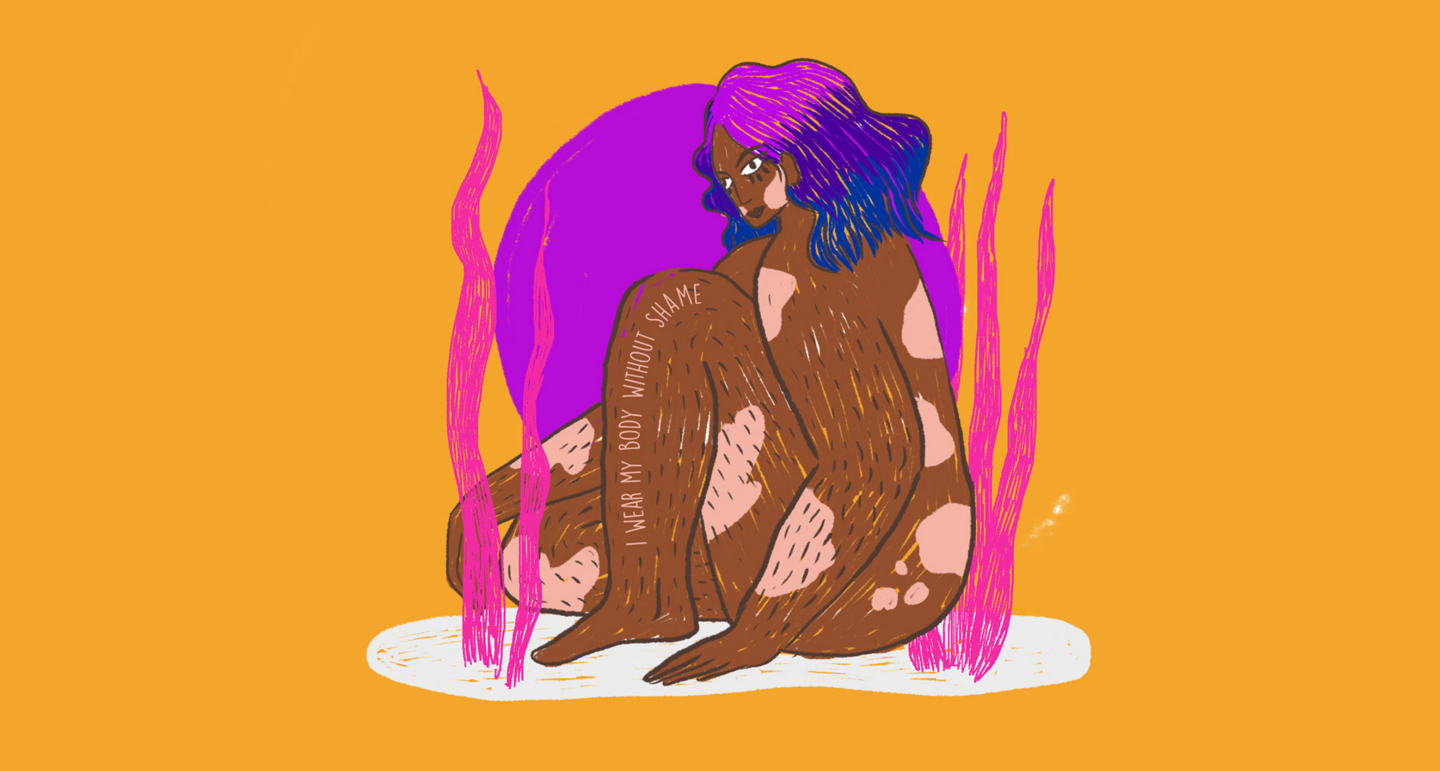
Empowering Women Human Defenders Through Rapid Response and Collaboration
Vidushi, Ashwin
Objective
As a young feminist fund, FRIDA provides young feminist organizers, who are not afraid to disrupt the status quo, with the resources they need to amplify their voices and bring attention to the social justice issues they care about.
In 2010, FRIDA became the first donor to exclusively support young feminist groups and organisations (YFOs) around the world. Almost a decade later, with the Young Feminist Pluriverse narrative report, they reflect and understand how their grantee partners have evolved accompanied by FRIDA’s continuous support.
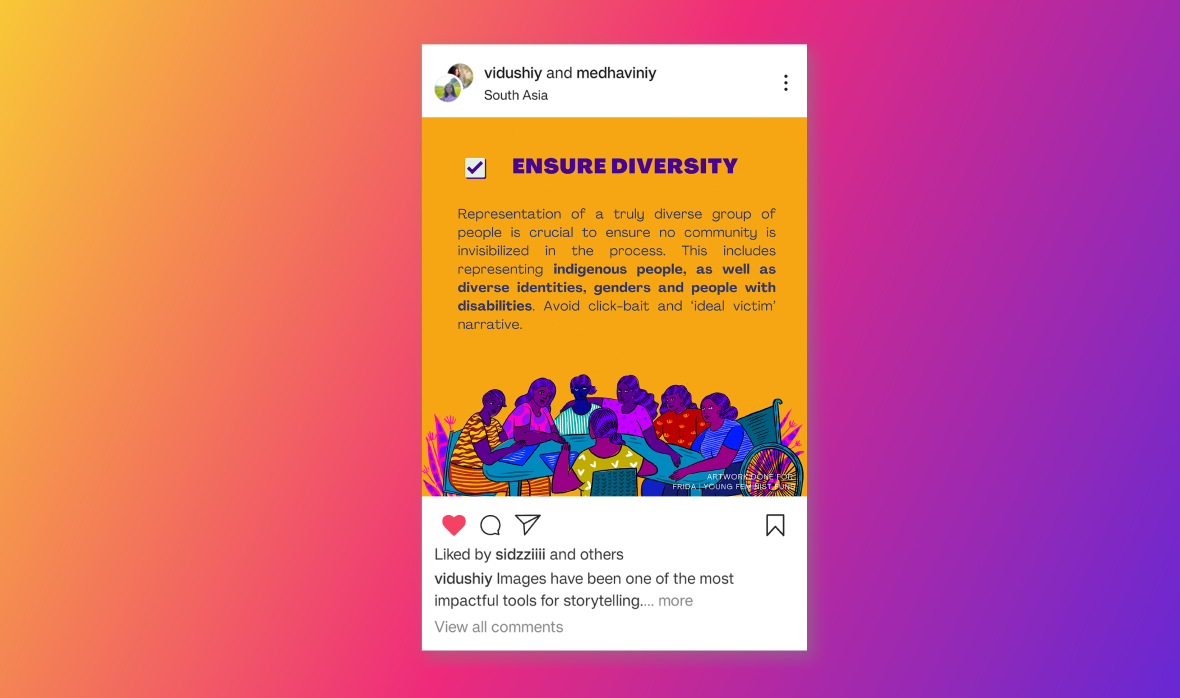
Don’t Be A Hero Of Their Story
An organisation can be an agent of change, enabling collaborative practices rather than perpetuating the hierarchy of ‘funder’ and ‘beneficiary.’ Doing so will ensure that people have the agency to engender change, inspire trust and drive decision making. After all, they know what’s best for their land, their people and their community.
Artwork Done For:
Urgent Action Fund for Women’s Human
Rights Asia Pacific (UAF-AP)

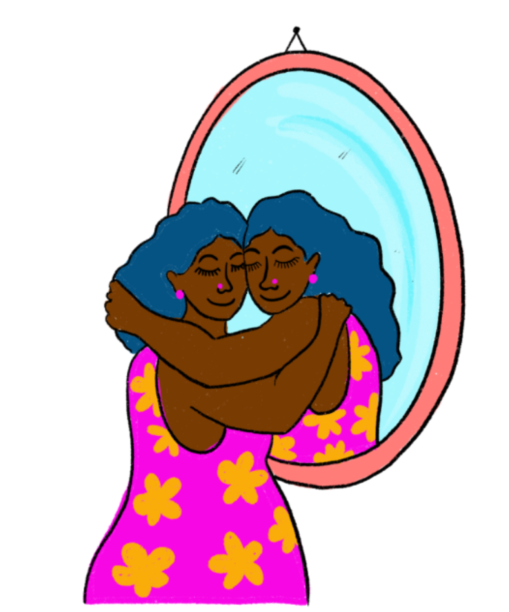
Engage local people in the decision-making process
Recipients of aid are not passive people, they should have ownership and a voice in your project. While strategizing project communication, gain informed consent on how they would want to be portrayed and represented. Instead of depicting one community receiving resources from another, represent indigenous knowledge and the exchange of resources.
Artwork Done For:
International Women’s Rights Action Watch
Asia Pacific (IWRAW AP)
Talk About Exchange Of Resources (rather than just giving)
Ask yourself what you learned/gained from local people. This could be a new tool or skill, or different methods of managing, organising and leadership.
Artwork Done For:
FRIDA | Young Feminist Fund

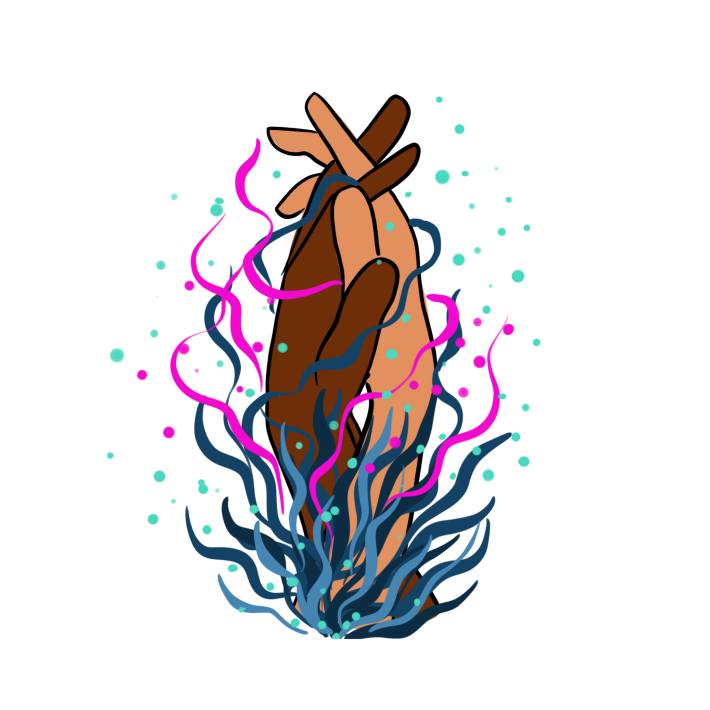
Focus on power, capacity & skills of local people
Pause and take a look at the larger narrative these images are building, and re-imagine how we can, instead, shift towards empowering narratives. Ask people what they bring to the table. Show images of local doctors, development workers, community organiser, nurses, farmers, crafts persons and teachers etc. Our images need to talk about solidarity, not charity; power, not helplessness.
Artwork Done For:
Asia Pacific Network of Sex Workers (APNSW)
Focus on solutions rather than problems
The persistence of colonial visual culture is especially glaring in international development. Often, we are presented with an oversimplified and one sided portrayal of people in the global south, where the narrative is framed around unfortunate people in the need of ‘saving’.
Do not use pity inducing images of
violence, poverty or hungry-disfigured bodies instead focus on what can be done to tackle the problems these people face.
Artwork Done For:
Asia Pacific Network of Sex Workers (APNSW)
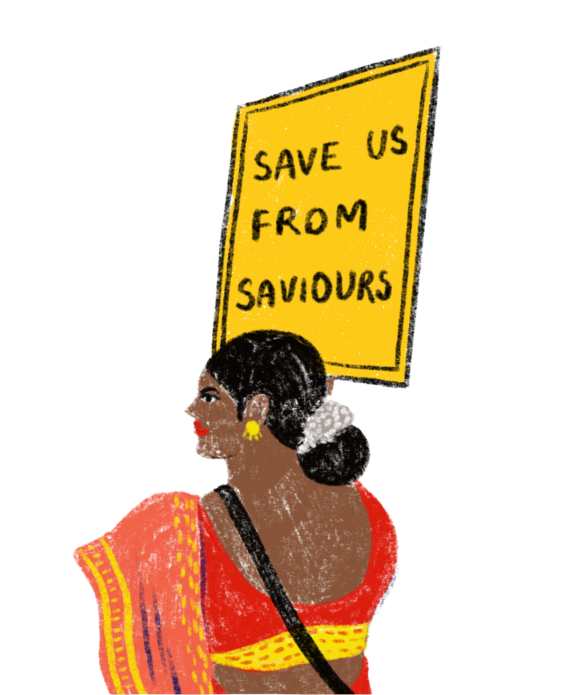
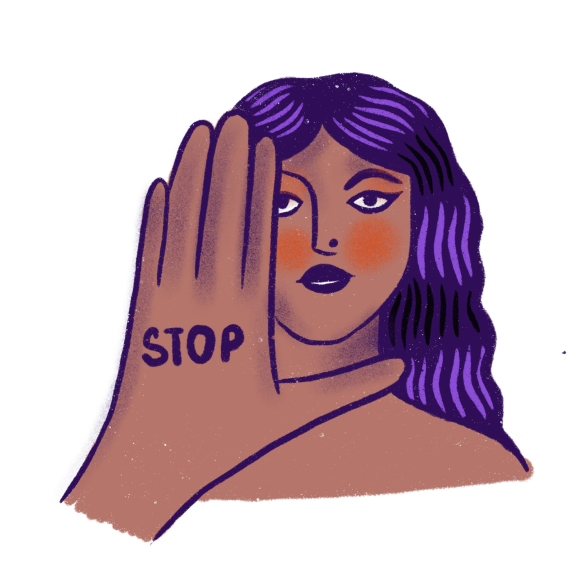
Be mindful of the emotions that trigger your audience
Say, while representing gender-based violence, focusing on the face of a bruised woman or a woman cowering in a corner has become the norm. While the perpetrator is entirely missing from the picture, the women are portrayed as helpless victims. These images are highly sensationalised, insensitive and triggering to women, especially those with experiences of abuse. Sexual and/or gender based violence is usually about re-establishing power.
It’s about showing the women their place. Aren’t these images doing the same? Think about what emotions you want to trigger through your work? Is it empowering, constructive and hopeful?
Artwork Done For:
Asia Pacific Network of Sex Workers (APNSW)
Ensure Diversity
Representation of a truly diverse group of people is crucial to ensure no community is invisibilized in the process. This includes representing indigenous people, as well as diverse identities, genders and people with disabilities. Avoid click-bait and ‘ideal victim’ narrative.
Artwork Done For:
FRIDA | Young Feminist Fund
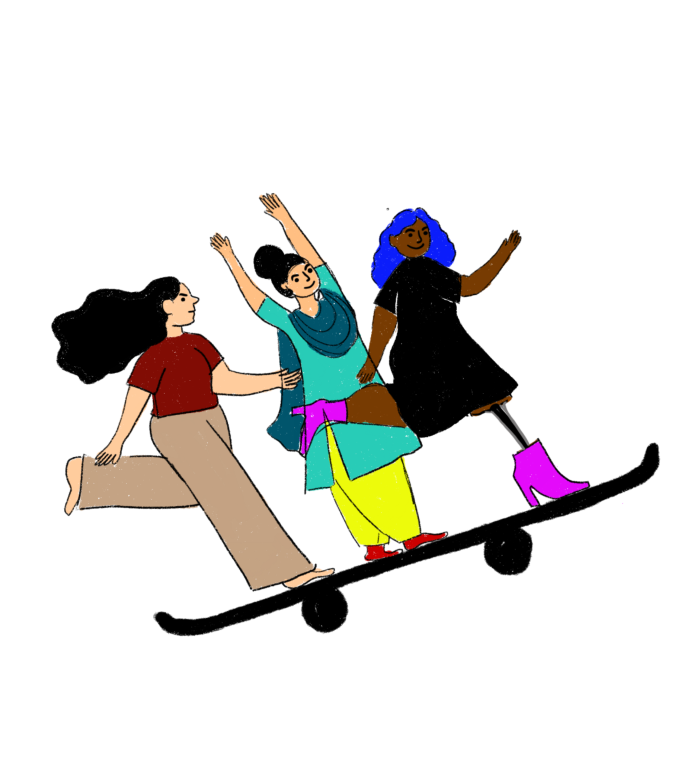
Use images that preserve dignity of the people
When images have a glaring absence of stories shared through the voices of the people being portrayed–they strip people of their agency and dignity, and show them as just people waiting to be saved. Such images invoke pity, guilt and other-ness, disconnecting viewers from the people they set out to serve. They are not only unfair to the persons portrayed in the campaign, but also hinder long-term development.
When you work, think about how your images depict their story with dignity, sharing unique human experiences and feelings.
Artwork Done For:
International Women’s Rights Action Watch Asia Pacific (IWRAW AP)